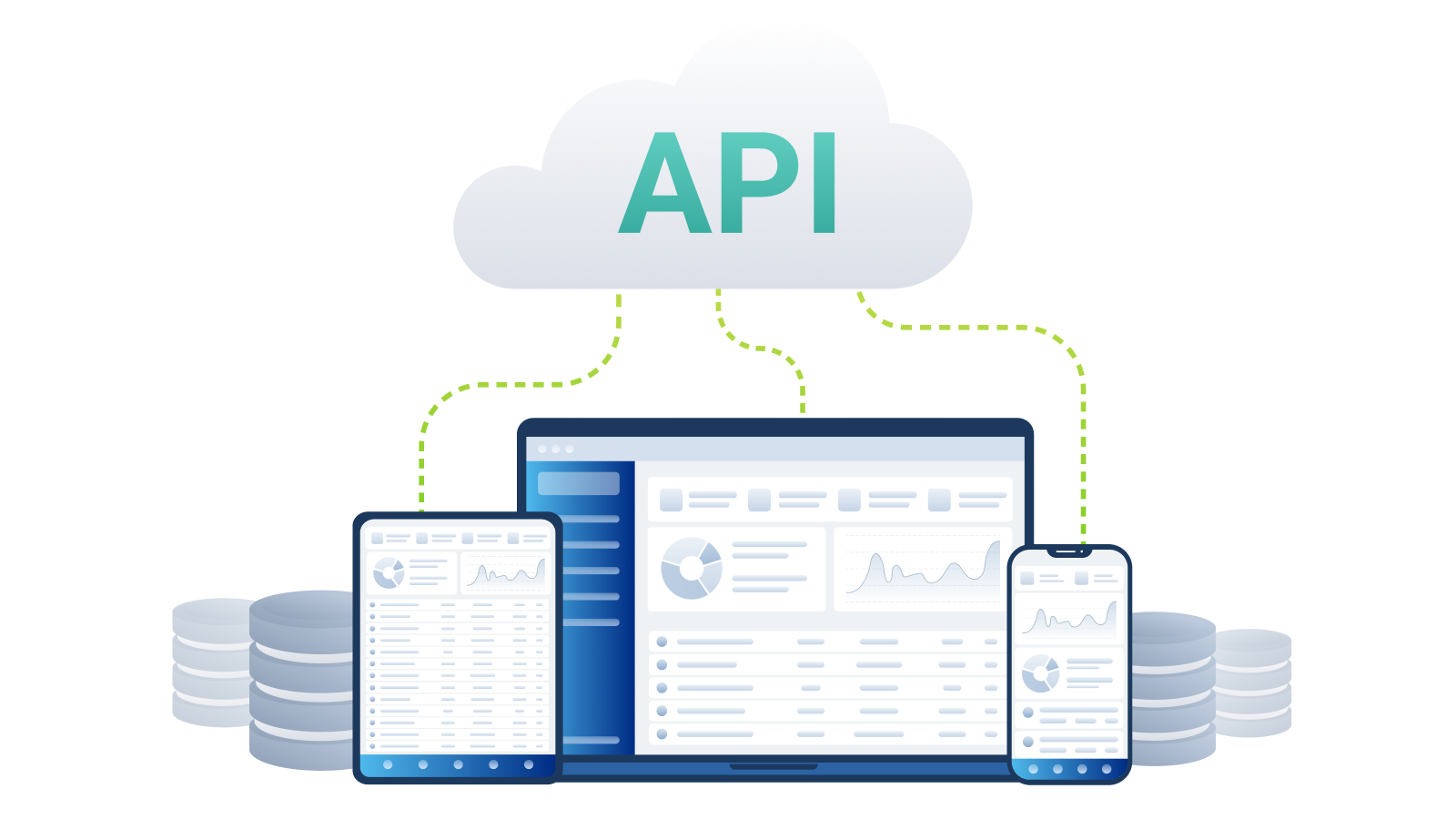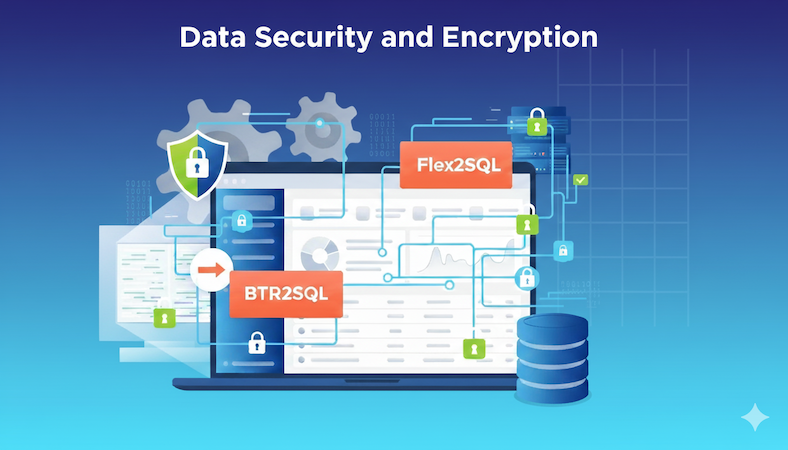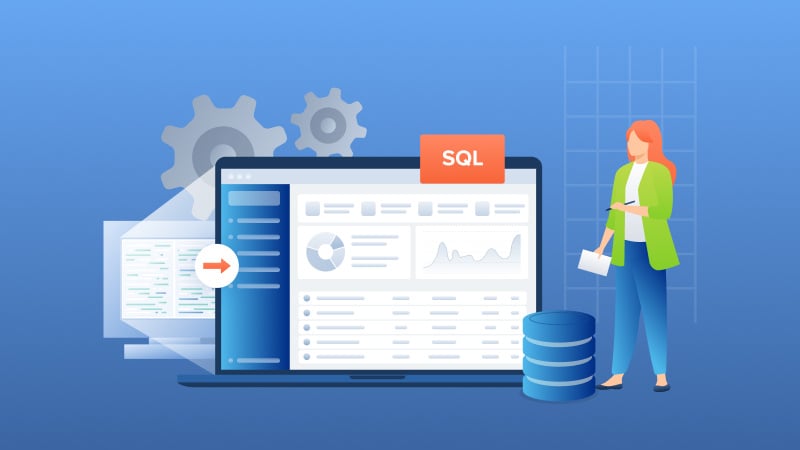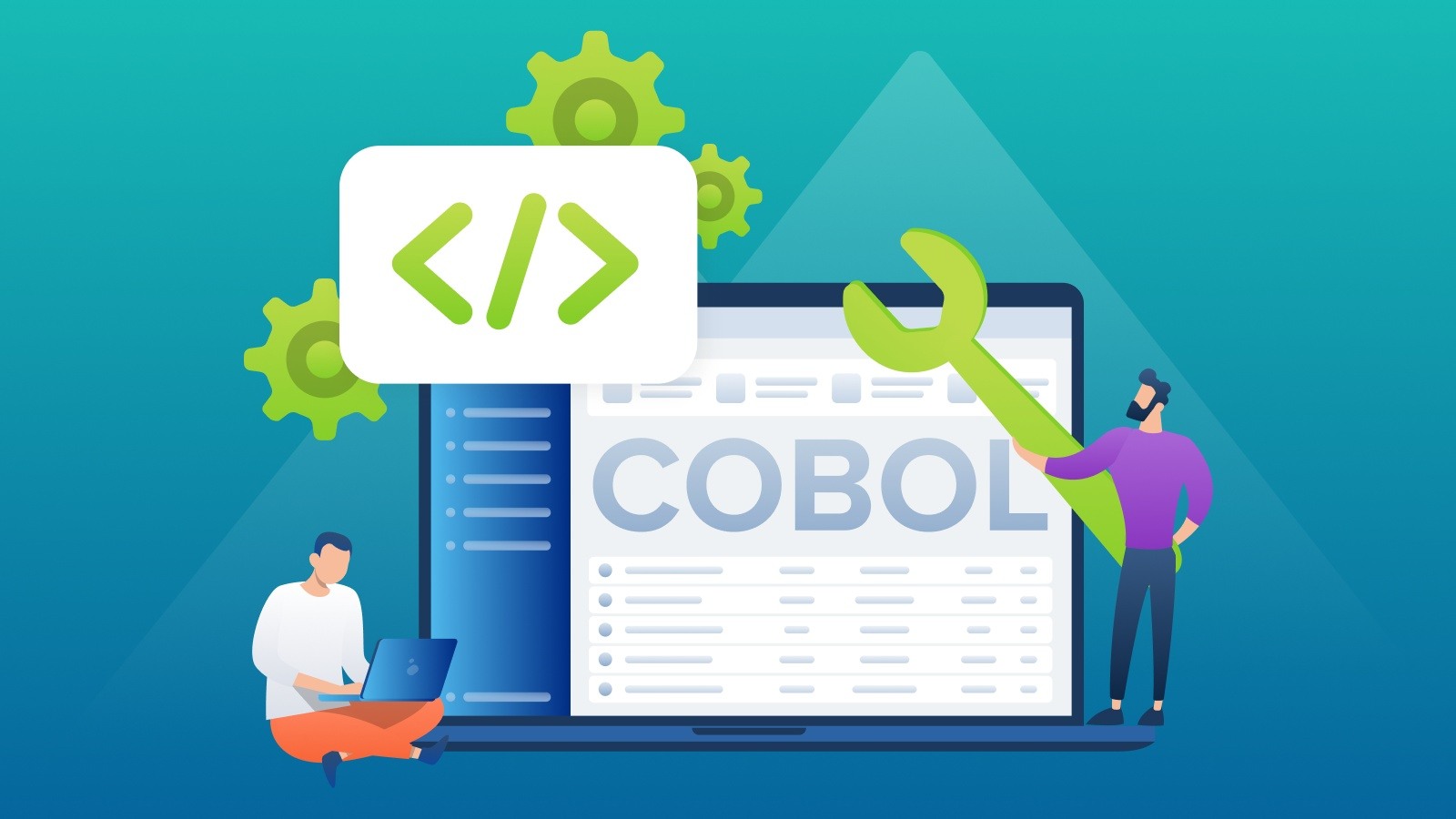Data Security with Flex2SQL and BTR2SQL Connectivity Products
The most common reason for Enterprises looking to migrate from legacy Btrieve or DataFlex databases is the urgent need to address security and...

This post is co-authored with Riaz Merchant, President and CEO at Mertech.
APIs in cloud computing reshape how businesses navigate cloud migration.
Moreover, with the cloud computing market expected to reach over $1,266 billion by 2028, the trend of moving to the Cloud will only surge.
But how can APIs help you leverage the vast possibilities of the Cloud?
They enable you to use modern, scalable, and flexible cloud architectures. By focusing on APIs, you can also establish a solid cloud migration strategy and keep up with the ever-changing technological trends.
In this blog, we delve into the role of APIs in cloud computing, the different types of APIs, their applications, and key considerations.
An API (application programming interface) is a set of routines, protocols, and tools that allow two applications to talk to each other. Think of them as software messengers or a bridge that connects applications.
These APIs offer the flexibility to grow and adapt without the headache of managing complex infrastructure. They make it possible to tap into global collaboration, to bring your team together no matter where they are, and to future-proof your applications.
API-driven development gives you access to powerful cloud functionalities, ensuring you can leverage cutting-edge technology and stay competitive in today's fast-paced digital landscape.

APIs in cloud computing can transform your digital infrastructure with finesse and power. Here, we'll unpack the main types of web APIs you'll encounter and how they can fuel your cloud-native computing ambitions.
SaaS APIs act as the bridge connecting your applications to vast, cloud-based resources, enabling seamless integration with various third-party services like Salesforce, Slack, and Shopify.
They're your go-to for adding value to your customer offerings without needing a deep design background.
Benefits include:
Some of their drawbacks are:
PaaS offers a comprehensive environment for application development, providing all necessary infrastructure from servers to databases, all hosted by the provider.
With giants like Azure and AWS offering PaaS API services, developers gain benefits such as:
The drawbacks include:
For those who crave control over their cloud resources, IaaS APIs can be a great option.
Platforms like AWS EC2 and IBM Cloud allow for intricate management and automation of cloud resources, presenting benefits such as:
The drawbacks include:
Cross-platform APIs are the Swiss Army knife in your cloud computing toolkit, offering compatibility across different cloud environments. They allow you to mix and match services across providers, unlocking benefits like:
However, drawbacks include:

APIs in cloud computing can be applied to diverse business cases and deployment models. Let's delve into how APIs empower different cloud strategies and the role of cloud API protocols in ensuring seamless integration and communication.
Multi-cloud and hybrid cloud migration models cater to distinct business needs, with APIs laying the foundation for seamless operations and integration.
In multi-cloud architectures, APIs are the linchpin for integrating and managing services from diverse cloud providers. This enables businesses to cherry-pick the most apt services from different clouds, fostering innovation and optimizing costs without being committed to a single vendor's ecosystem. In this context, multi-cloud APIs facilitate a cohesive operational framework, allowing for smooth data exchange and functionality across platforms.
Conversely, hybrid cloud setups utilize APIs to meld on-premises infrastructure with cloud services, creating a unified environment. This blend supports compliance-sensitive applications by maintaining them on-premises while leveraging the Cloud's scalability for less sensitive components. Hybrid cloud APIs ensure that these interconnected environments operate cohesively, enabling businesses to benefit from the Cloud's agility while keeping critical operations securely anchored on-premises.
Whether hybrid or multi-cloud fits your needs better, APIs empower you to navigate the complexities of both integrations efficiently, ensuring enhanced security and simplified systems management.
API cloud protocols define how applications communicate over the Cloud, significantly influencing their performance, scalability, and security. Here are some of the main cloud API protocols:

Sometimes, legacy applications cannot be moved to the Cloud (for example, because they depend on specialized software or were simply not designed with the Cloud in mind). APIs allow you to modernize these legacy systems by using an API wrapper that is developed around your existing application.
Simply put, APIs are game changers because they allow you to integrate a legacy or desktop application with more modern frontends with zero investment in new infrastructure.
From a development perspective, APIs make it easy to evolve your application alongside advancing technology.
Let's take a closer look at how you can use APIs to modernize your applications:
This option entails a complete rewrite, meaning you scrap your entire application and start building again from the ground up. While a rewrite provides the opportunity to redo and customize your application, keep in mind that not all programmers are experienced with API development, so you may need additional hires to get the project done.
Before scrapping anything, you also have to ensure all your customers are ready to move to the Cloud - and if you're like most ISVs in the market today, there's a good chance you have some customers who are ready for the Cloud, while others have no intention of moving away from the security of on-premise.
Instead of discarding your entire application and starting over, you also have the option to repurpose it by leveraging your existing codebase. By exposing your app's existing functions as secure web APIs, you can quickly launch a cloud application while also continuing to serve customers running on Windows if necessary.
Converting your existing application into APIs is the easiest, fastest, and cheapest modernization option because programmers don't need to be experienced in API development to create web APIs. Programmers of any skill level can write functions in the programming language and structure they know and then use API development tools like Thriftly to expose APIs securely.
If you adopt application modernization with microservices, APIs can help you transform your application from a monolithic behemoth into a series of microservices. This allows you to streamline development and serve your app as a suite of modular services rather than one large, interdependent program. Each service runs its own process that supports a specific business goal.
Some applications are broken down into smaller pieces that work together. This means they are built and operated independently as opposed to everything being developed together, which is the case in traditional monolithic applications. While microservices are easy to deploy and can be scaled quickly, some of the disadvantages to keep in mind are:

APIs are transformative, especially when migrating applications to the Cloud. With Mertech's Thriftly, a practical implementation of Apache Thrift, you no longer have to start from scratch.
To practically execute a Thriftly cloud migration, follow these streamlined steps:
Check out the complete step-by-step tutorial the we created to guide you the process of cloud migration with APIs using our tool.
Effective API management unlocks powerful benefits, such as streamlined operations and enhanced security, but it also comes with its set of challenges. Here's a deep dive into some key API management challenges and how you can handle them effectively:
Cloud migration often requires the re-engineering of existing applications to function optimally in a cloud environment. This transformation enables legacy systems to communicate effectively with cloud-based services, enhancing flexibility and scalability.
Some cloud API management best practices include:
Securing APIs is paramount, given they expose critical business data and functionalities to the internet. The challenge lies in protecting APIs from unauthorized access while maintaining ease of use for authorized consumers.
The main cloud API security best practices you can follow are:
An API management platform can streamline these processes, offering built-in security policies and the ability to manage access effectively.
Ensuring APIs perform under the demands of increased use and scalability is crucial for maintaining application responsiveness and user satisfaction. Performance issues can arise from unoptimized code, inadequate infrastructure, or poorly managed API versions.
Some best practices include:
Performance optimization should be an ongoing effort, with regular reviews of API usage patterns to adjust resources and configurations as needed.
The FMS Cloud Transformation Success Story
Freight Management Systems (FMS) had outdated Windows-based invoicing software, which was bogged down by manual entries and could not meet evolving customer expectations.
Partnering with Mertech, FMS harnessed the power of APIs to transform their system into a mobile, cloud-based solution, significantly streamlining the invoicing process. Leveraging Thriftly, they wrapped their existing code into APIs without needing a complete overhaul, creating a hybrid cloud solution that reduced the invoicing process from days to minutes. This innovative approach accelerated payments and positioned FMS competitively in a market shifting towards integrated systems.
Harness the transformative power of cloud computing with Mertech, a leader in API-driven strategies holding the Microsoft Gold Competency in Cloud Platform. Discover how our expertise can revolutionize your business operations.
Ready to embark on your cloud transformation journey?
Challenges often include:
While most developers can learn to write cloud APIs, doing so effectively requires understanding cloud architecture, security best practices, and the specific cloud provider's tools and services. To avoid substantial knowledge gaps and navigate the evolving cloud ecosystem successfully, developers can engage in continuous learning, training, and collaboration.
Consider solutions like AWS CloudWatch or Datalog for cloud API monitoring and Postman for testing. Such tools offer comprehensive support and ensure your APIs perform optimally and securely in the Cloud.

The most common reason for Enterprises looking to migrate from legacy Btrieve or DataFlex databases is the urgent need to address security and...

Introduction Many independent software vendors (ISV) and corporate users still rely on applications that use a category of database collective called...

COBOL applications are the foundation of numerous essential business functions, especially within the banking, insurance, and government sectors....